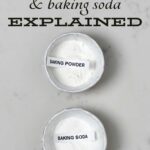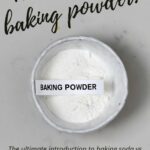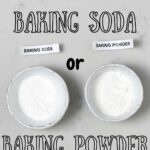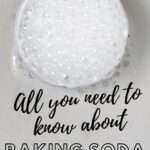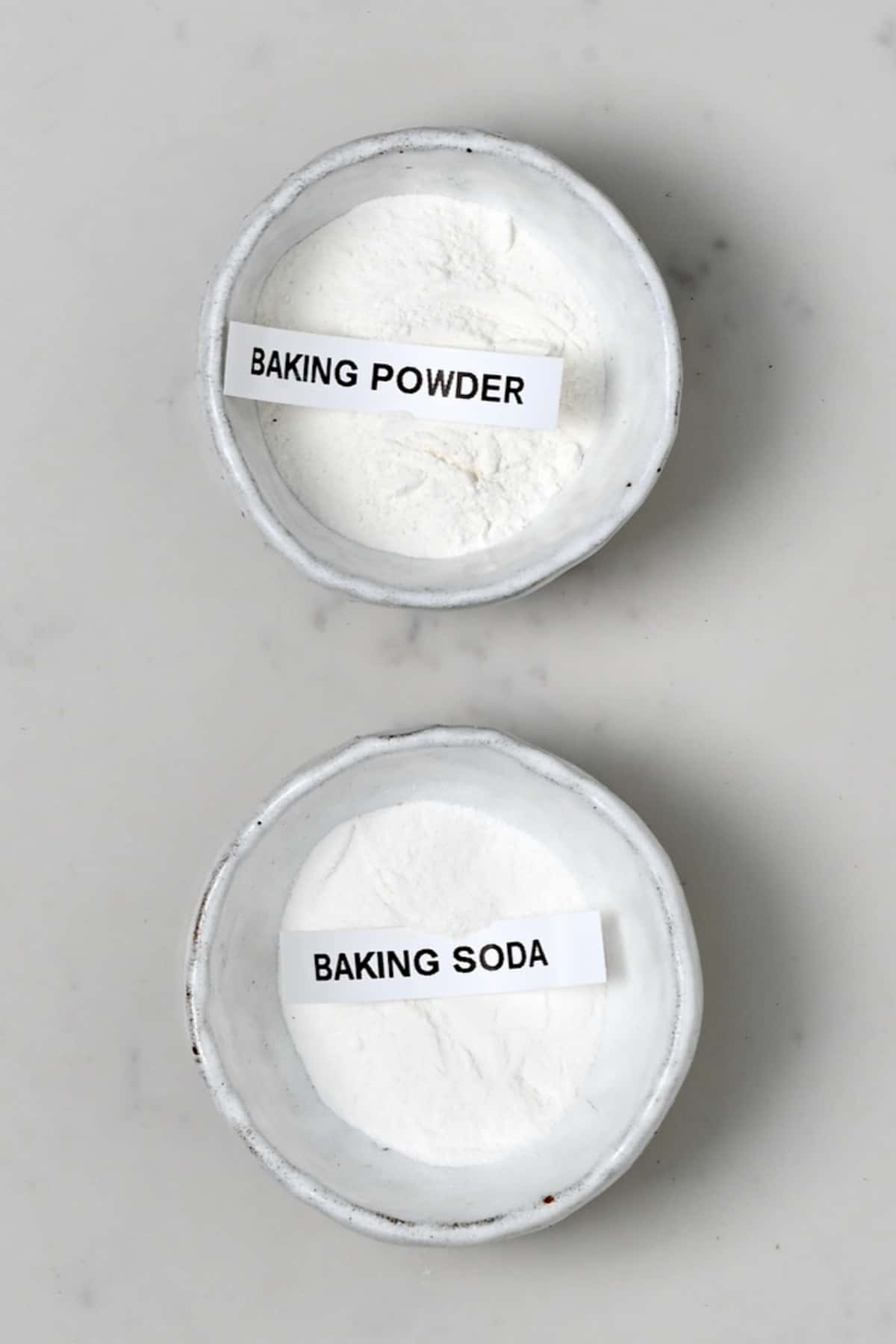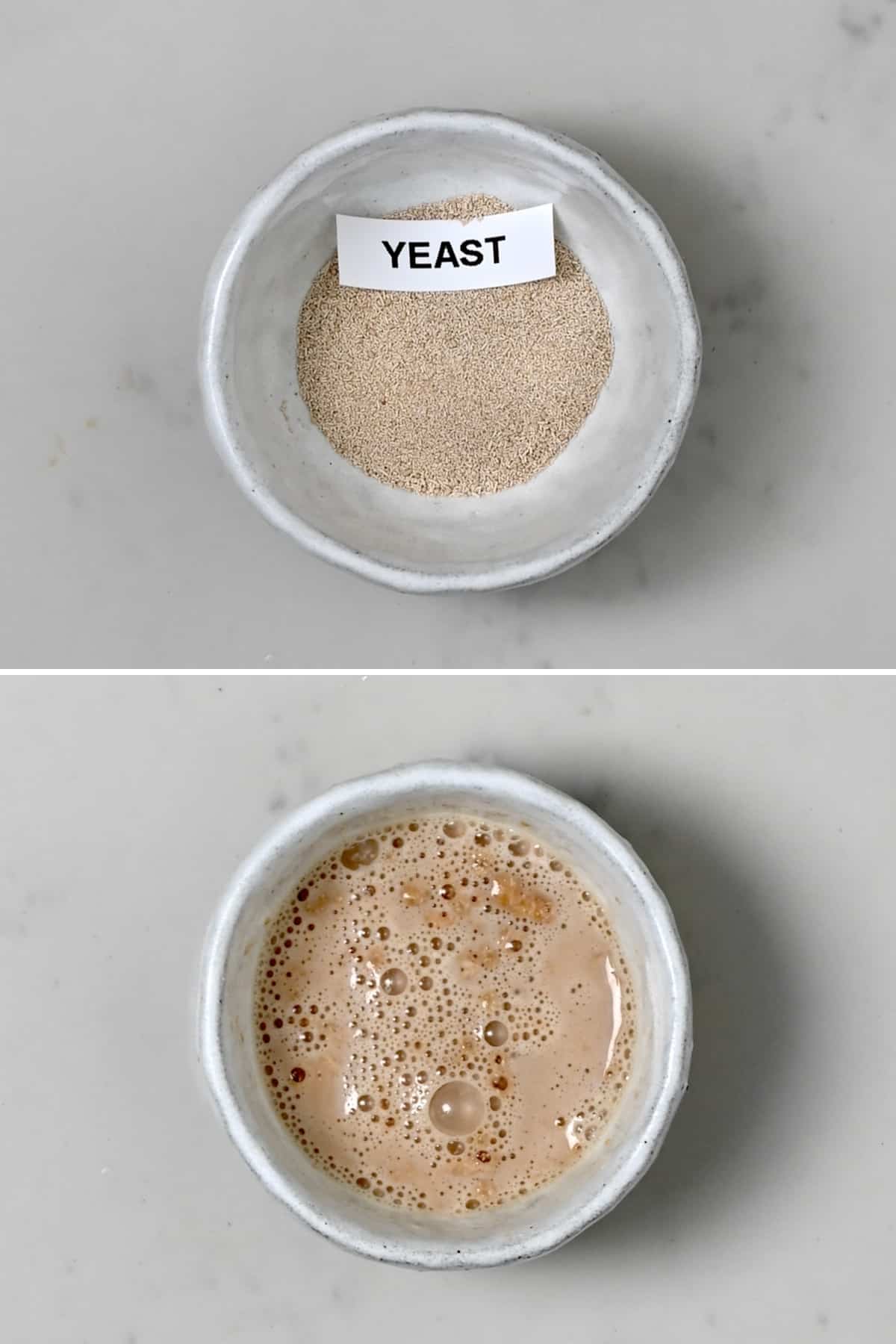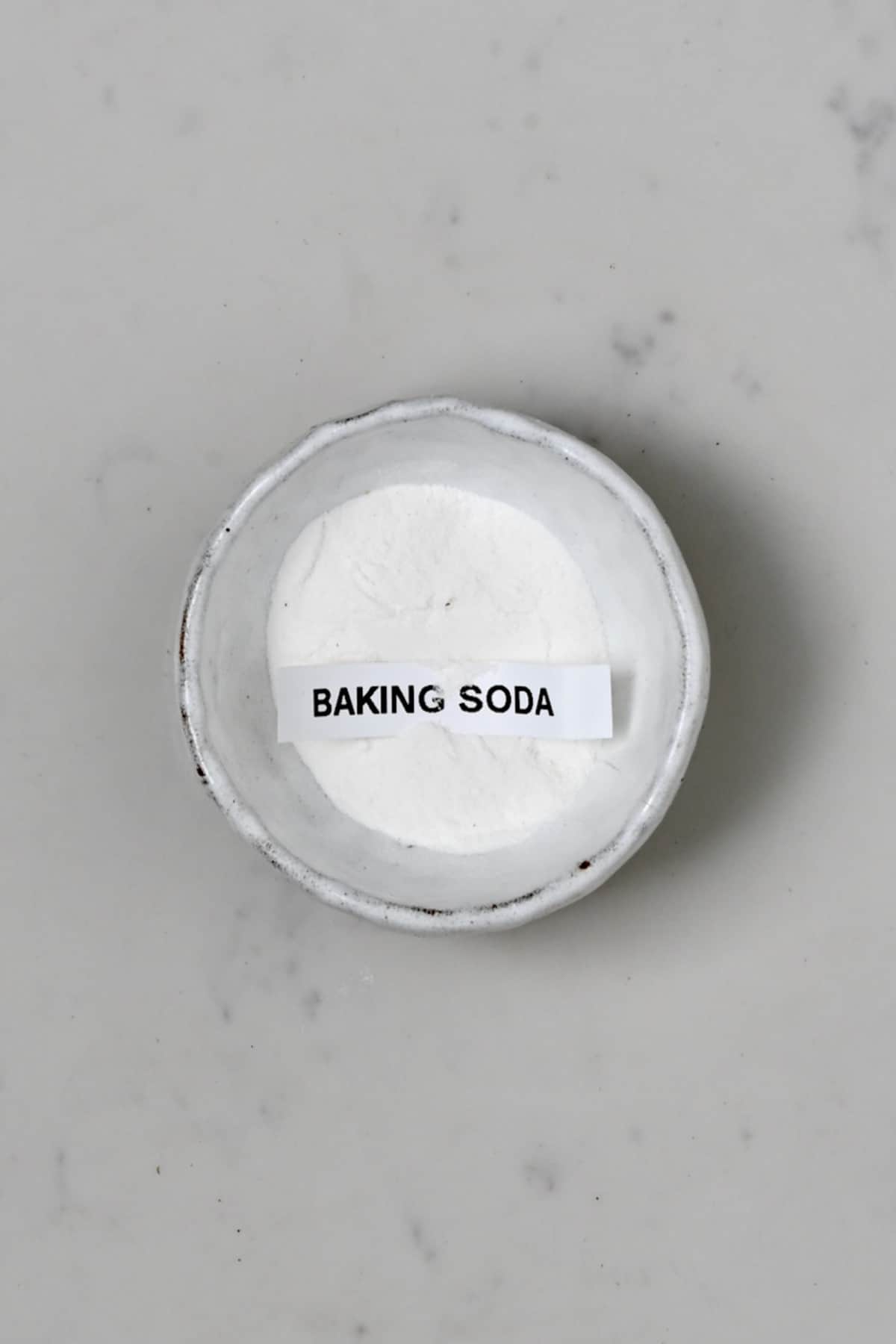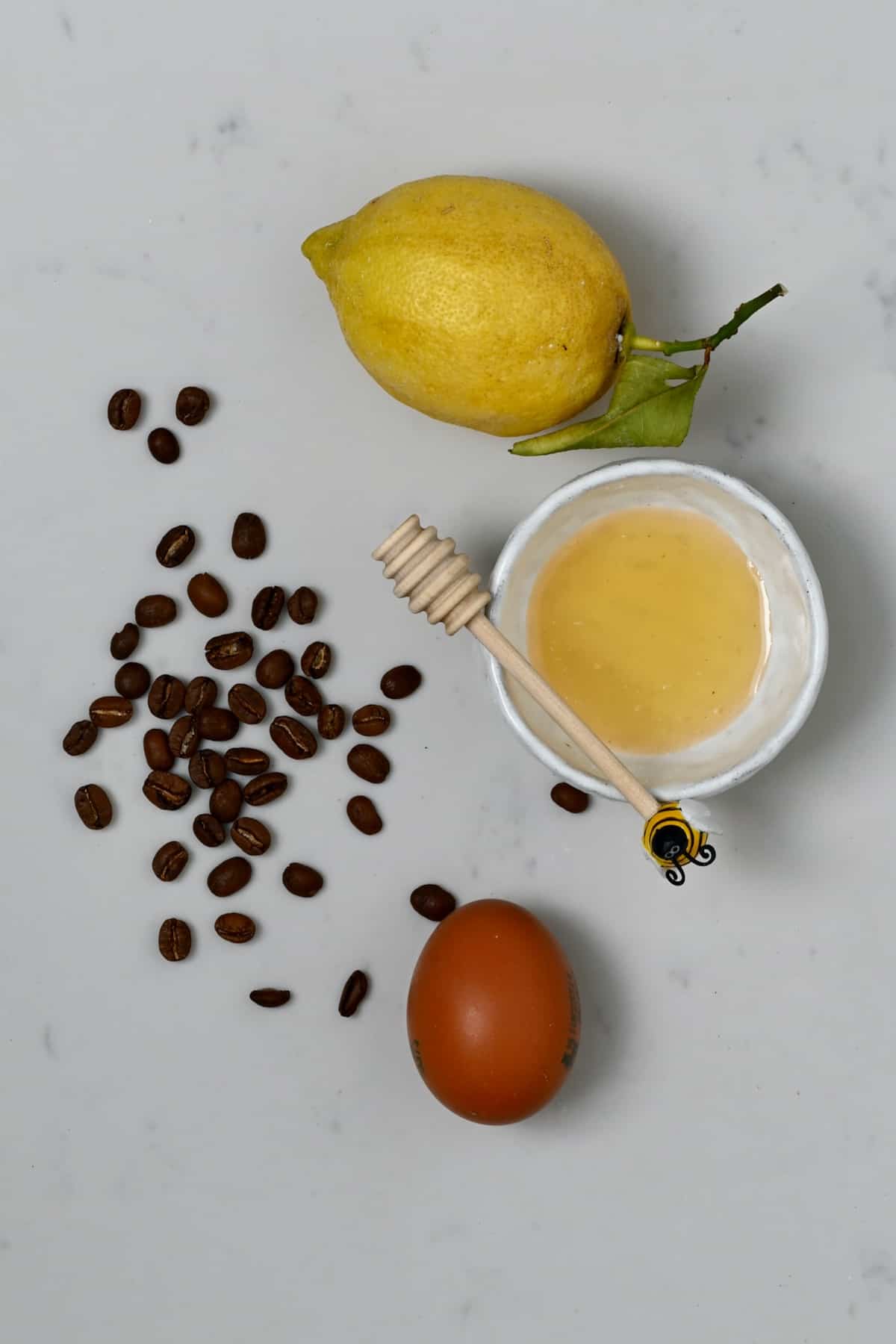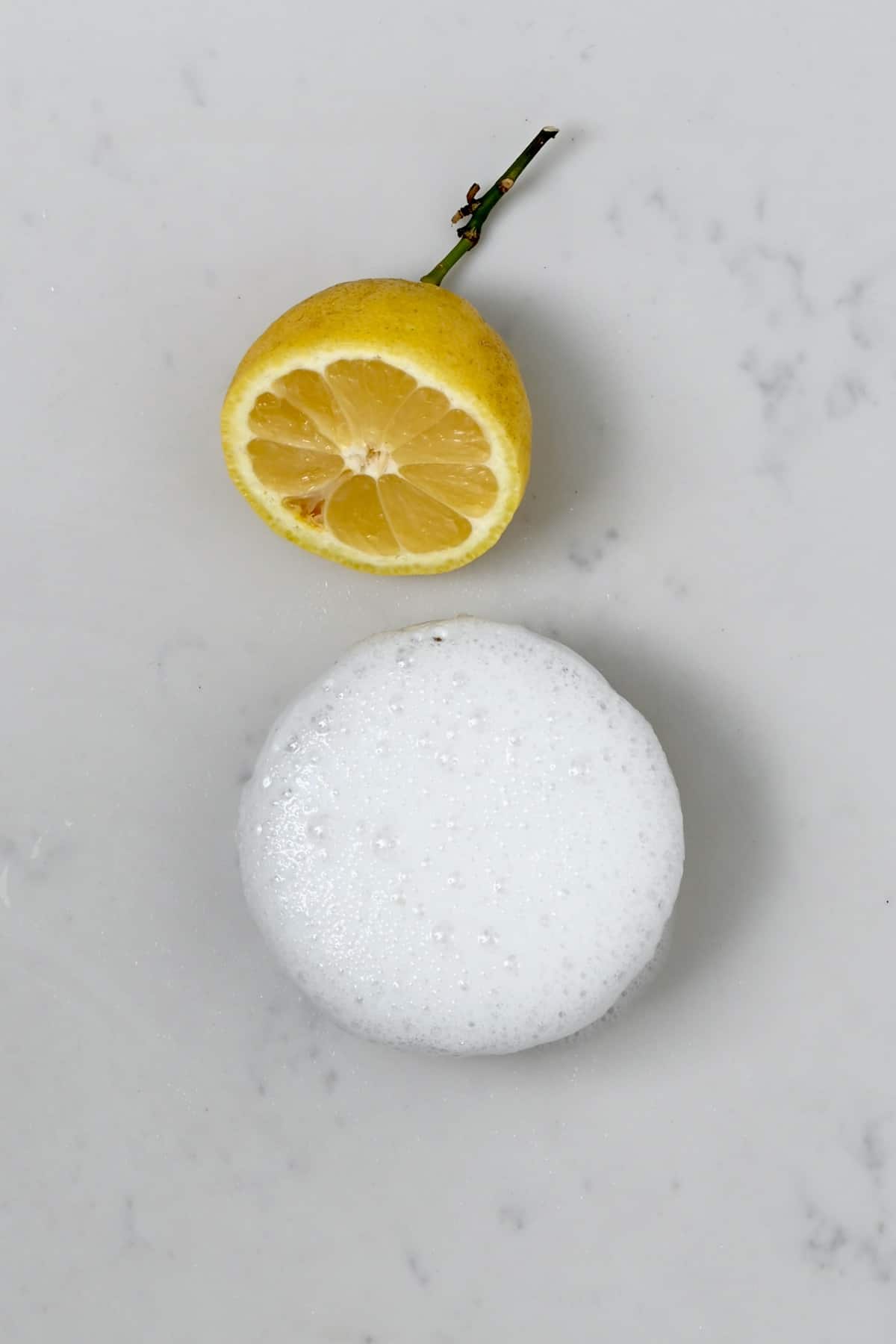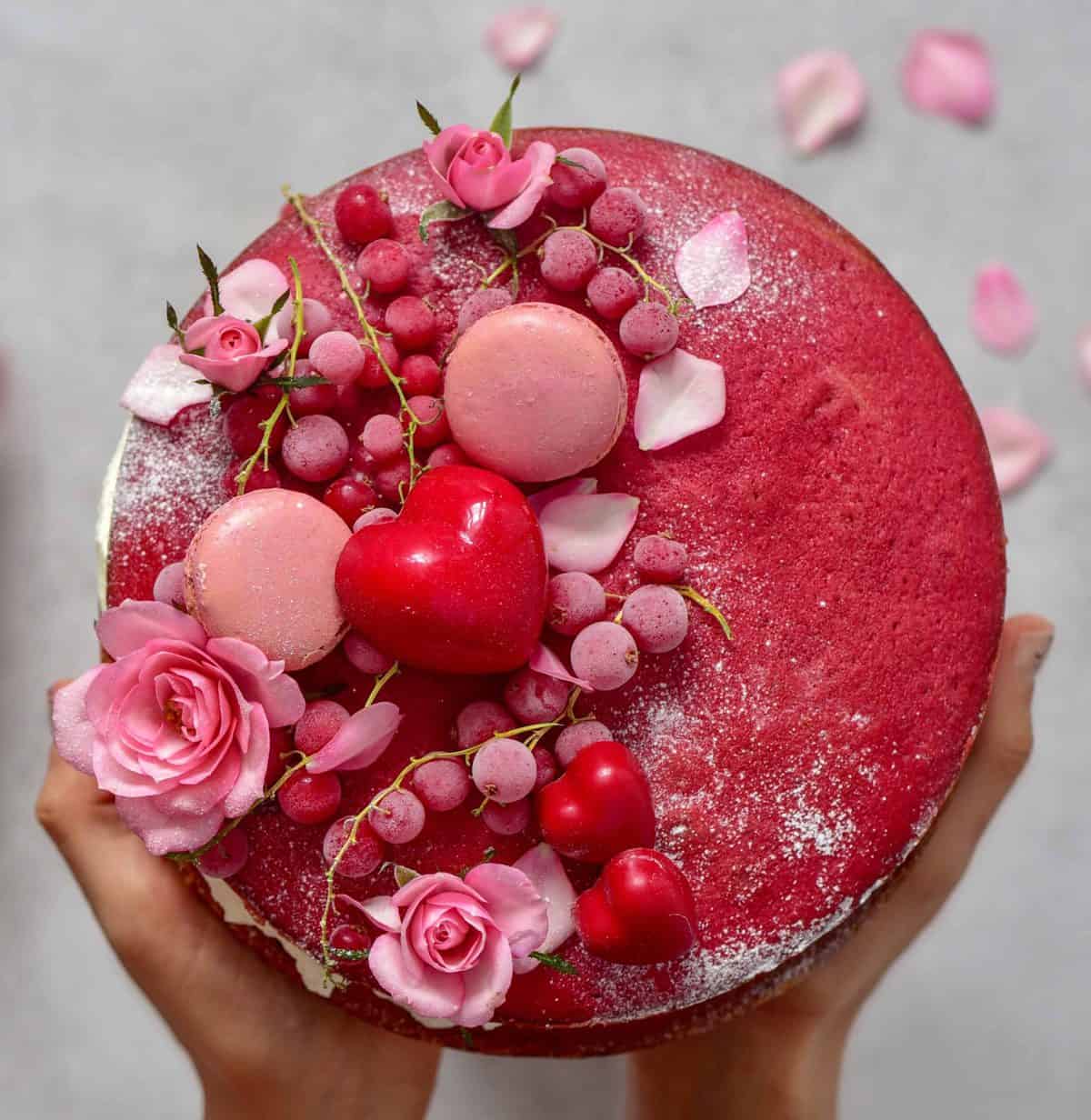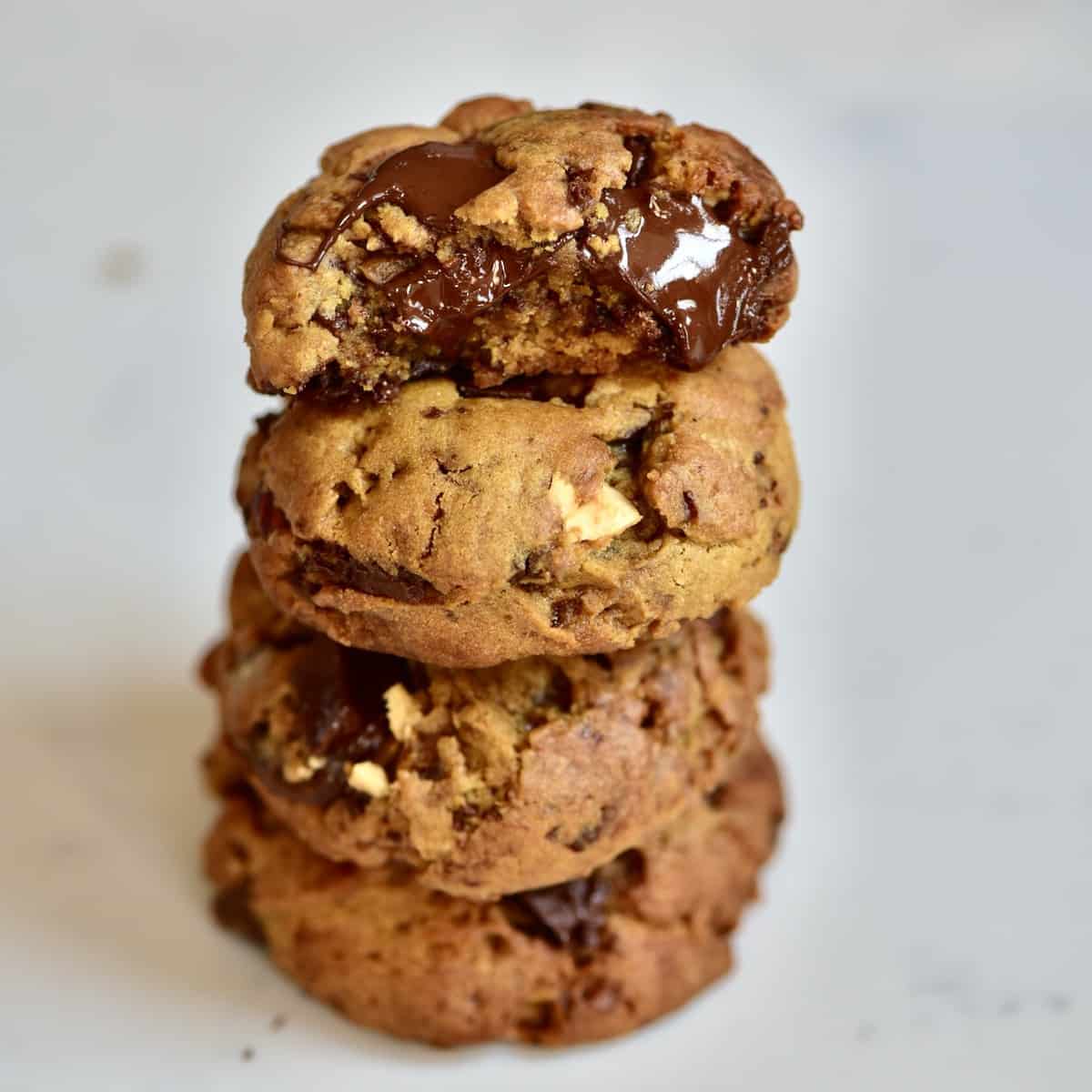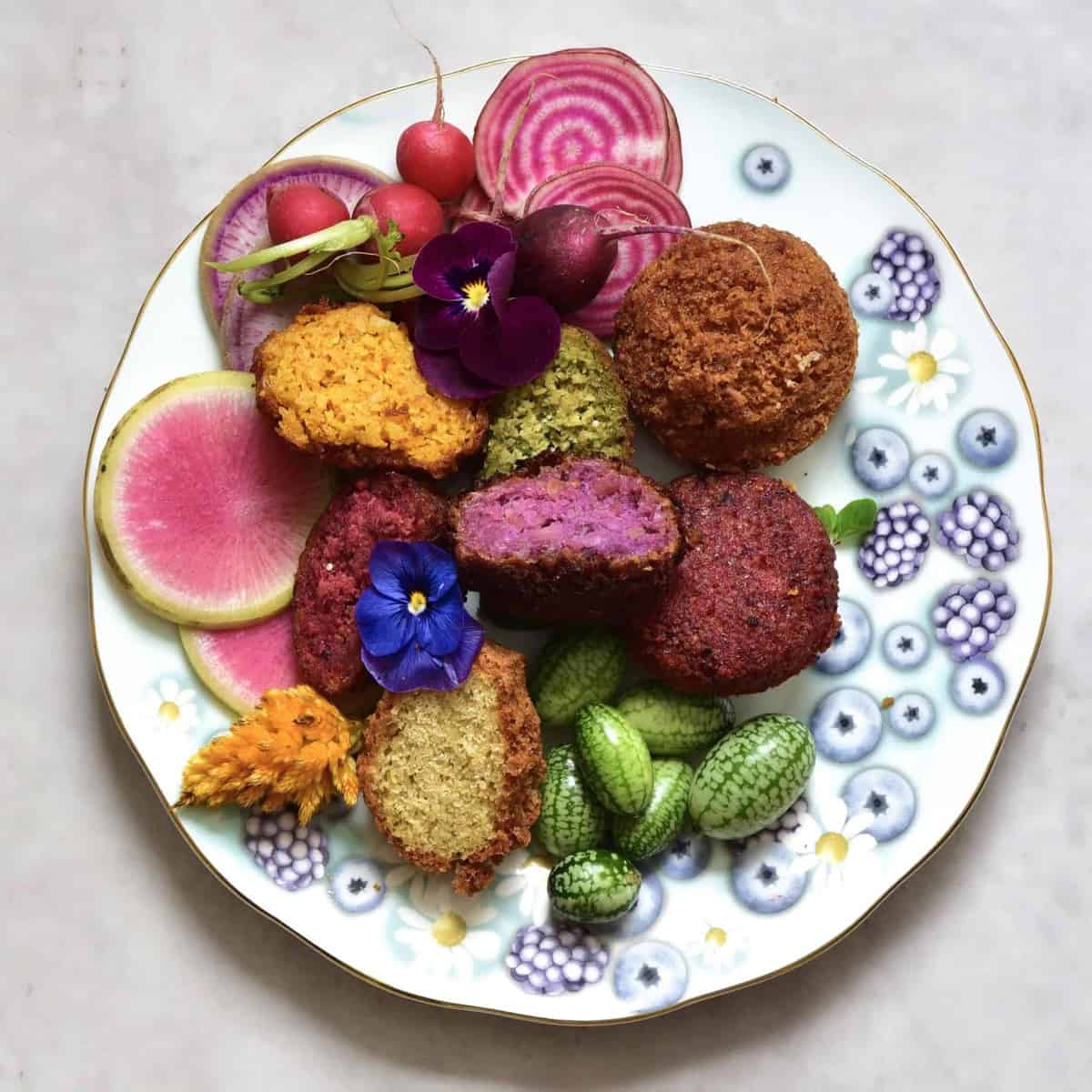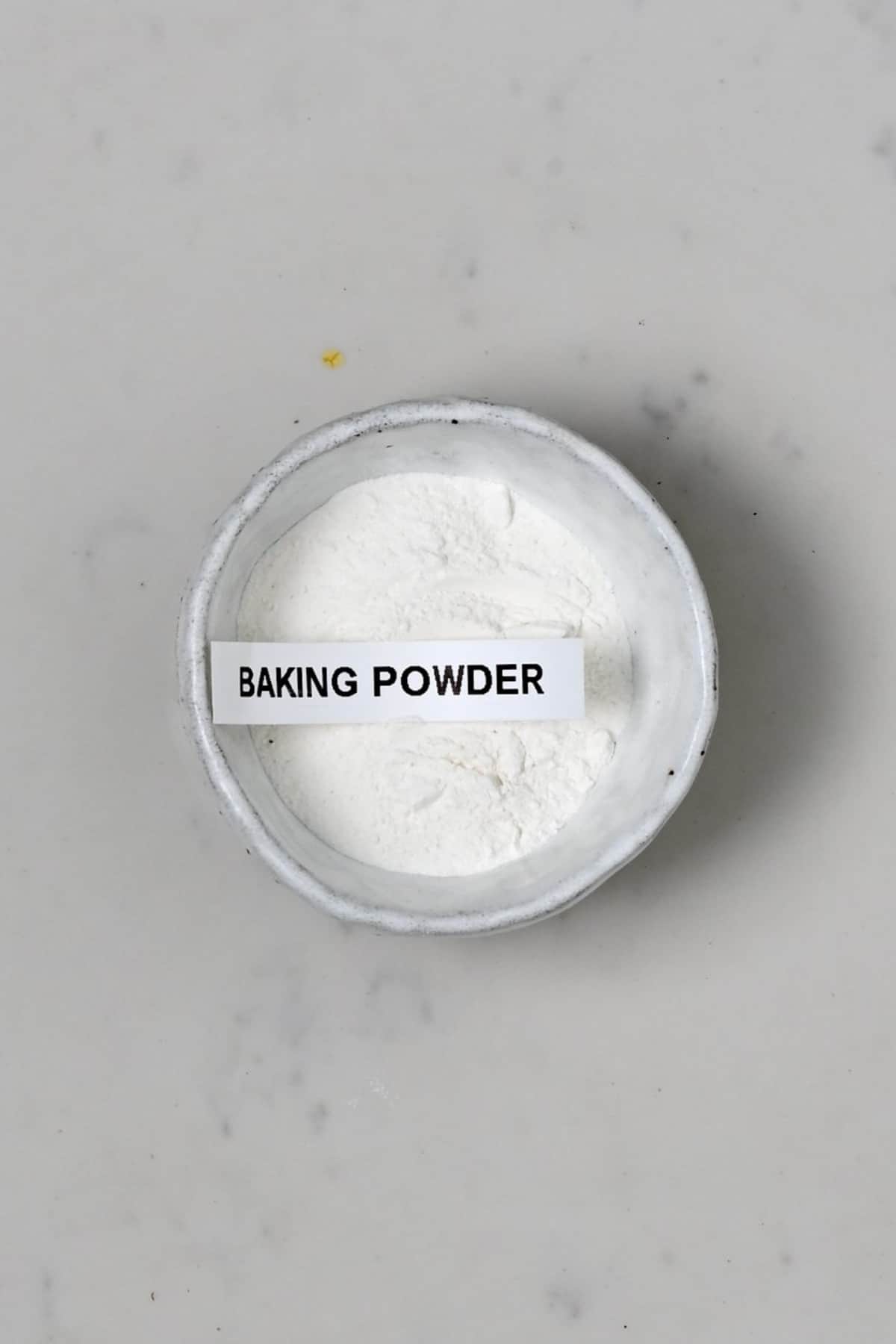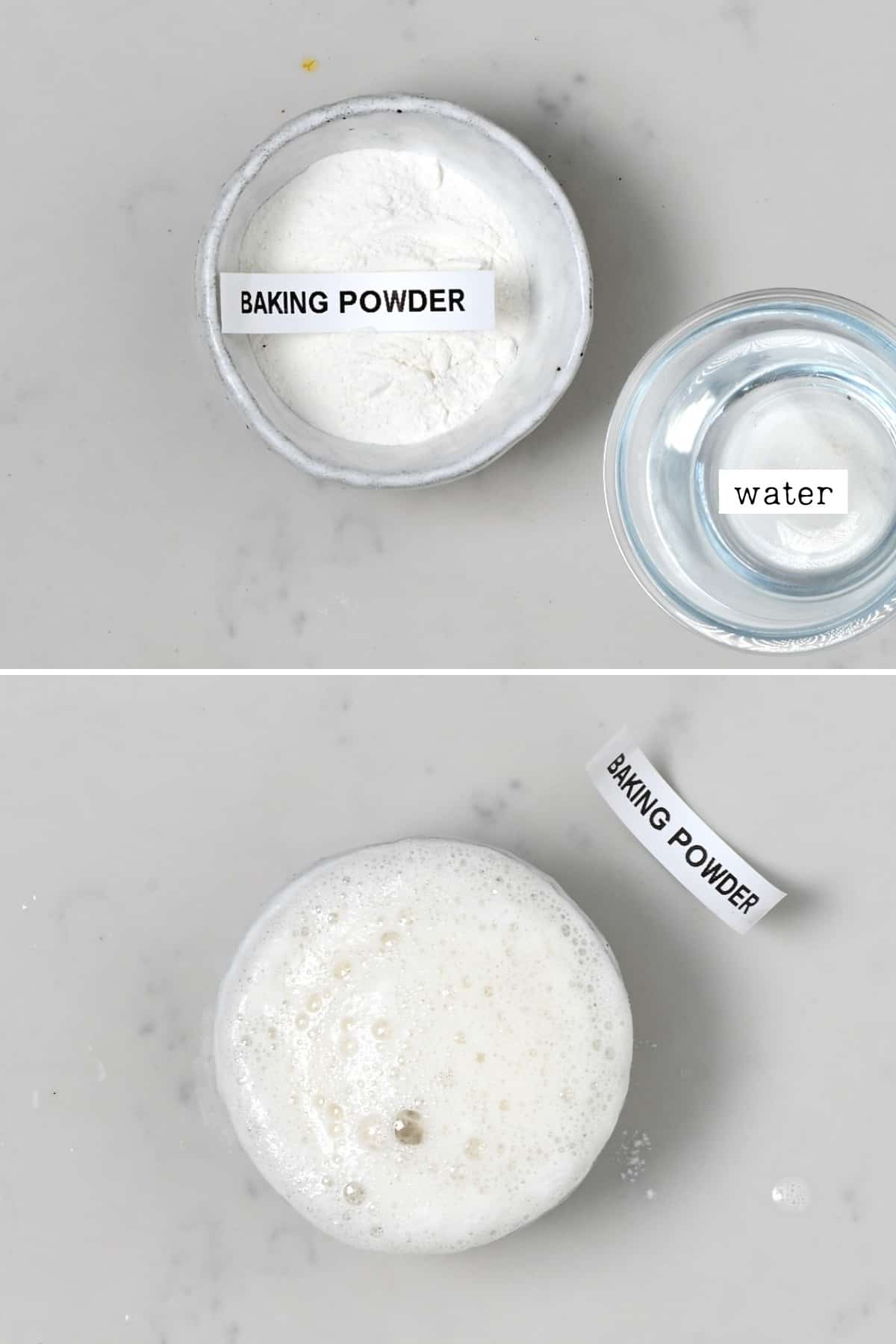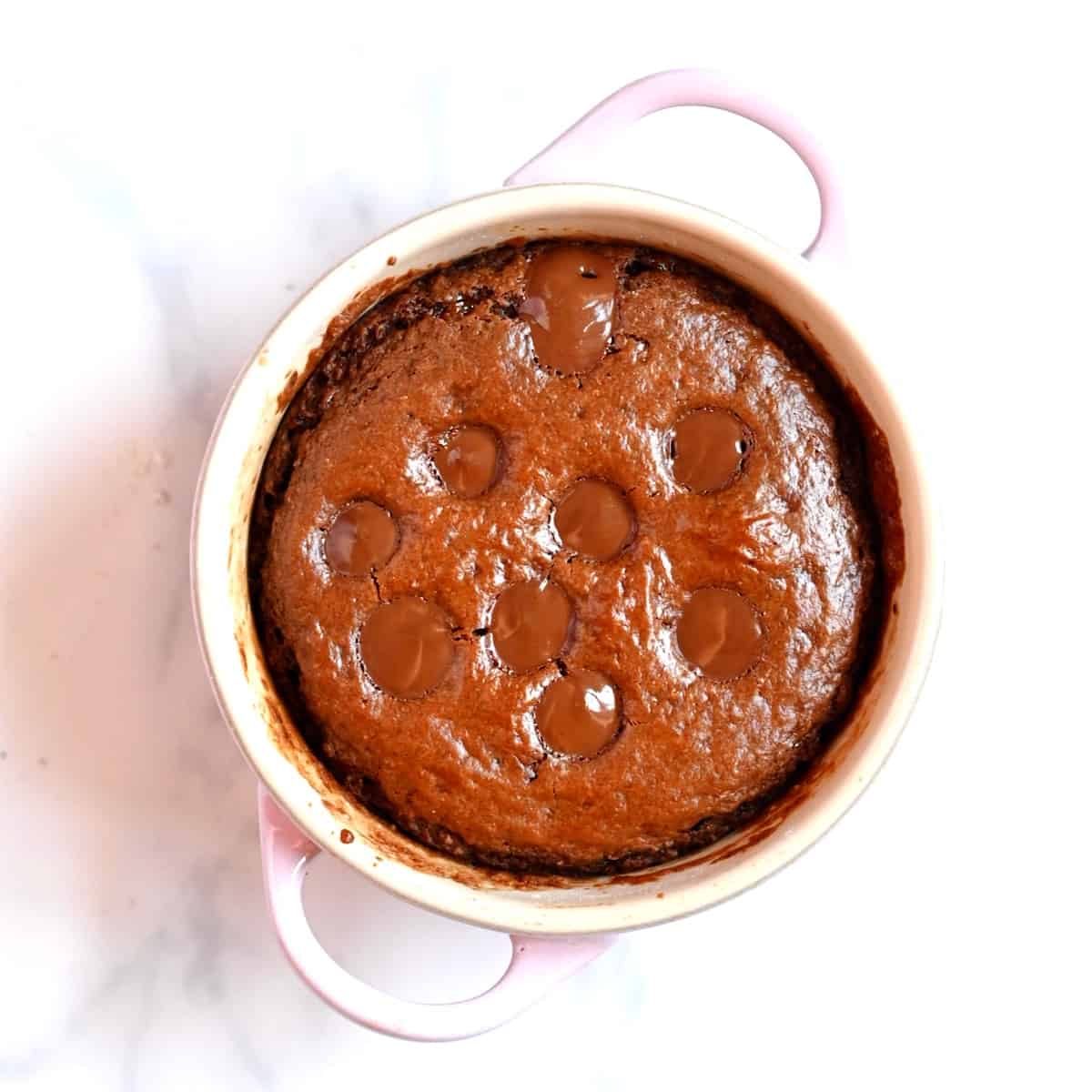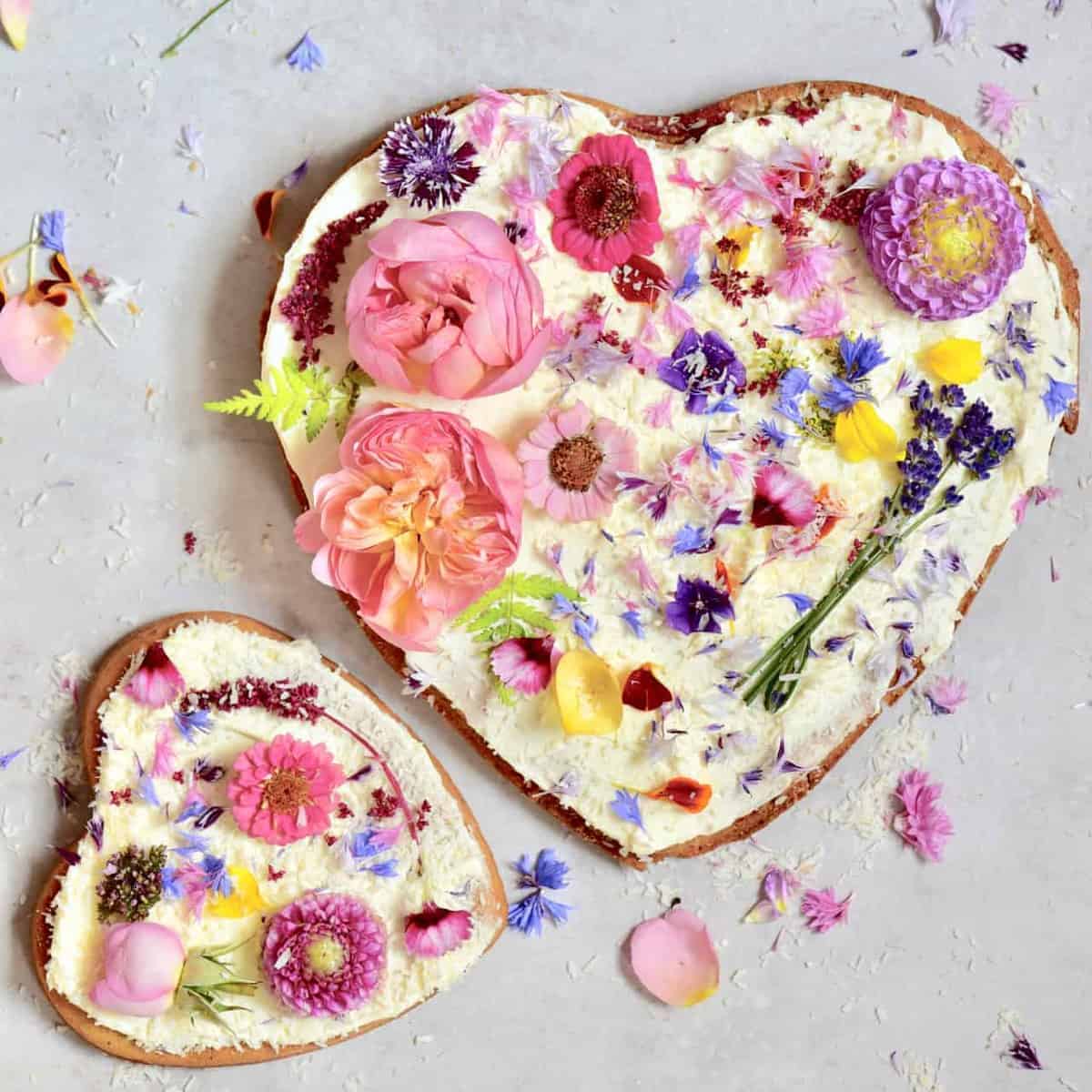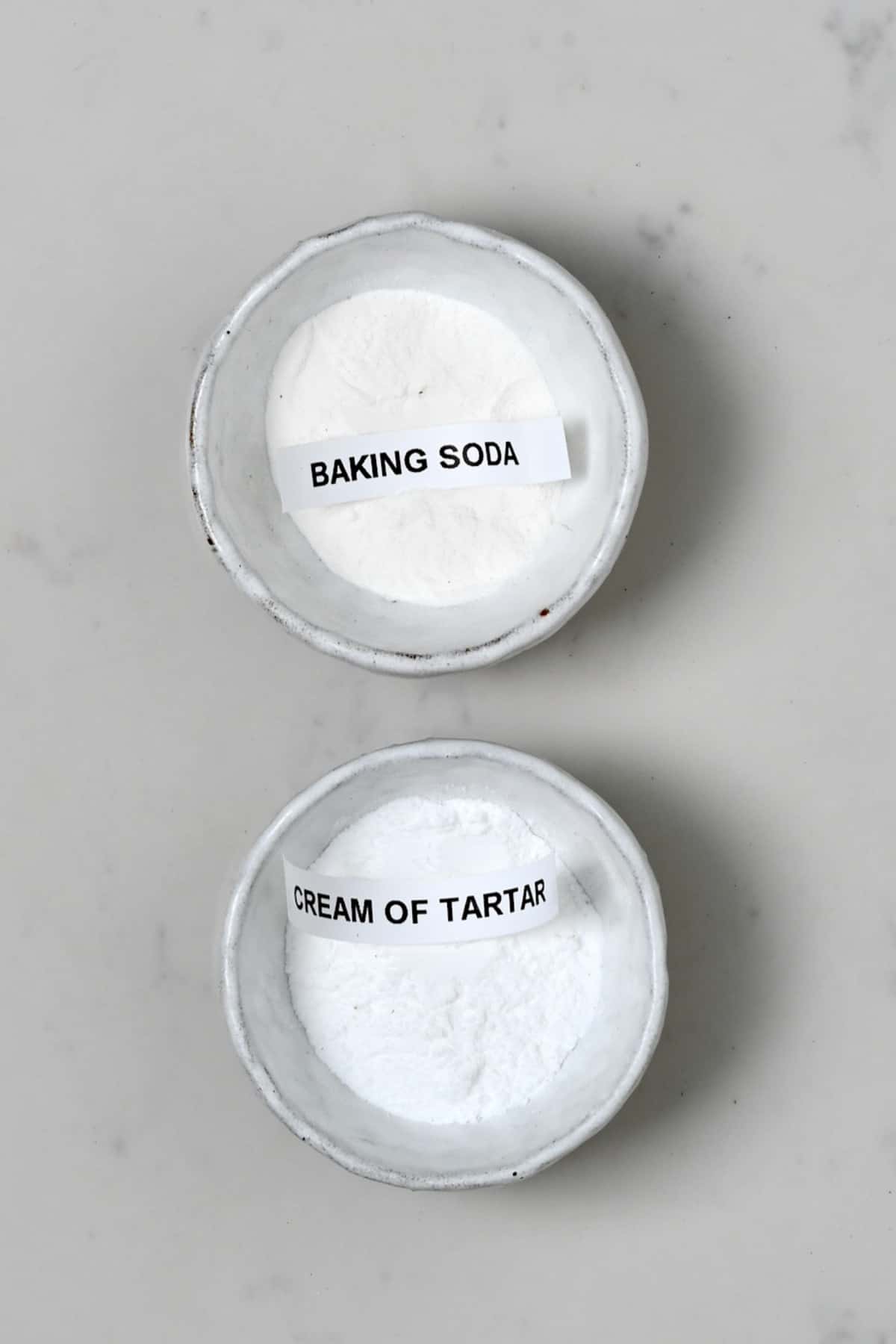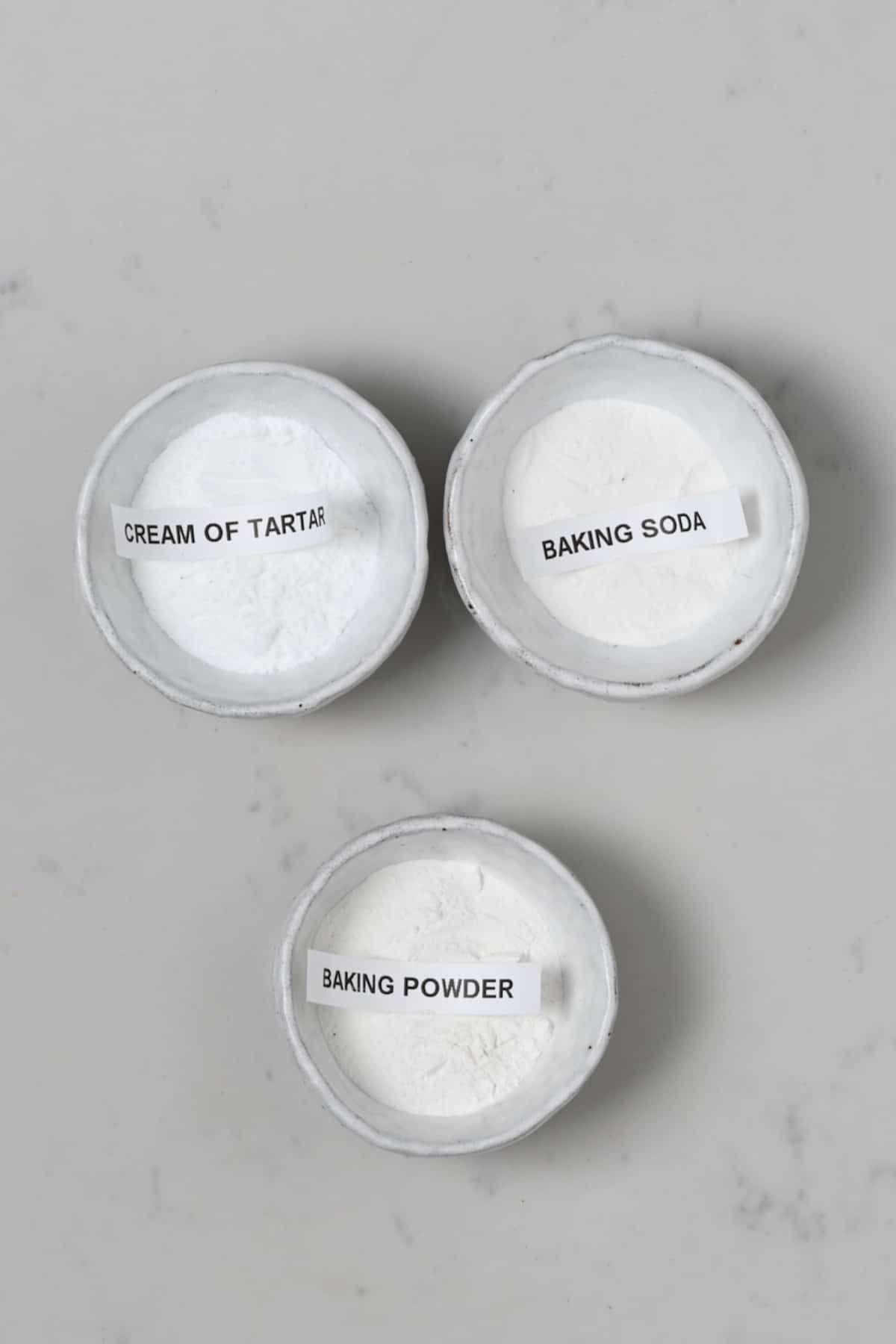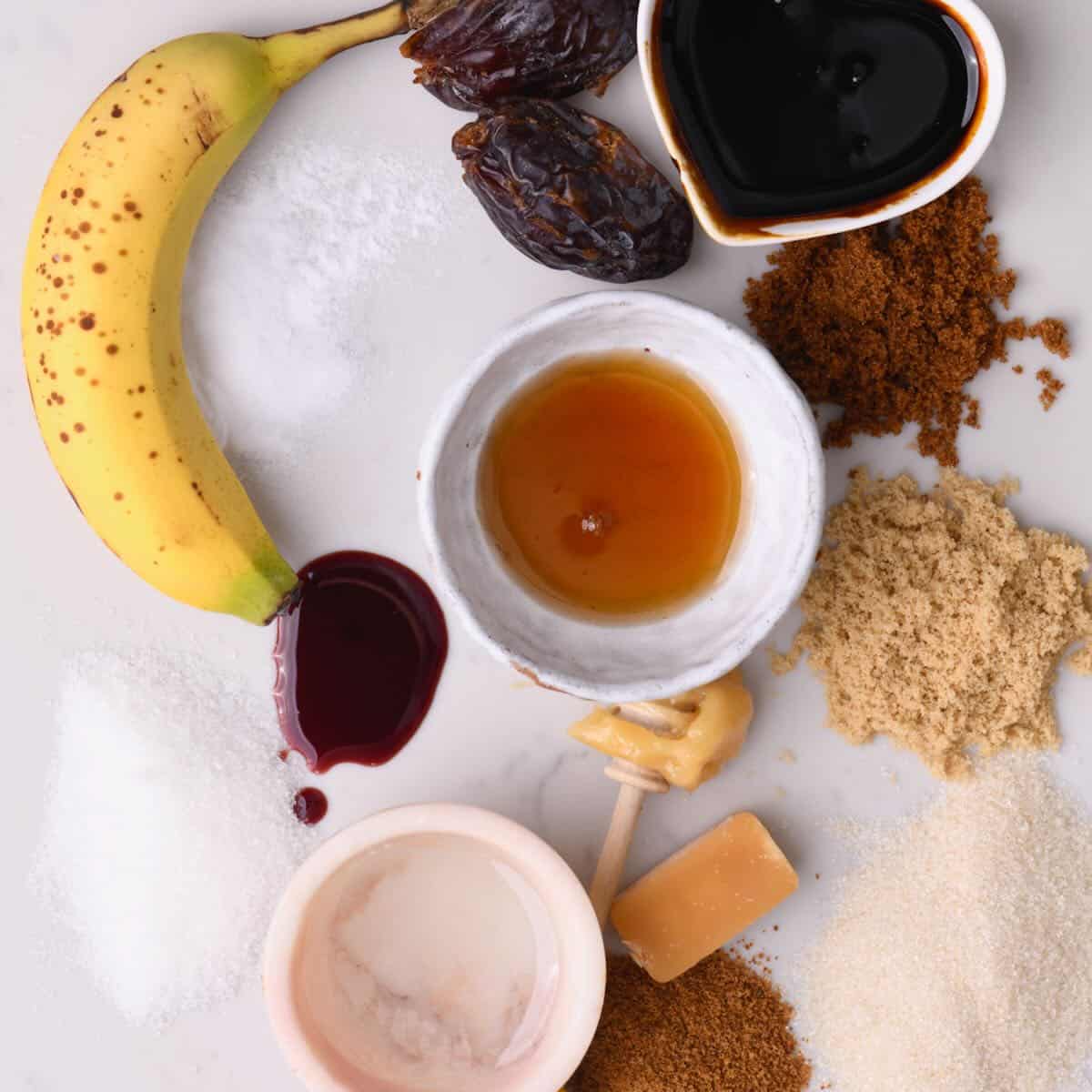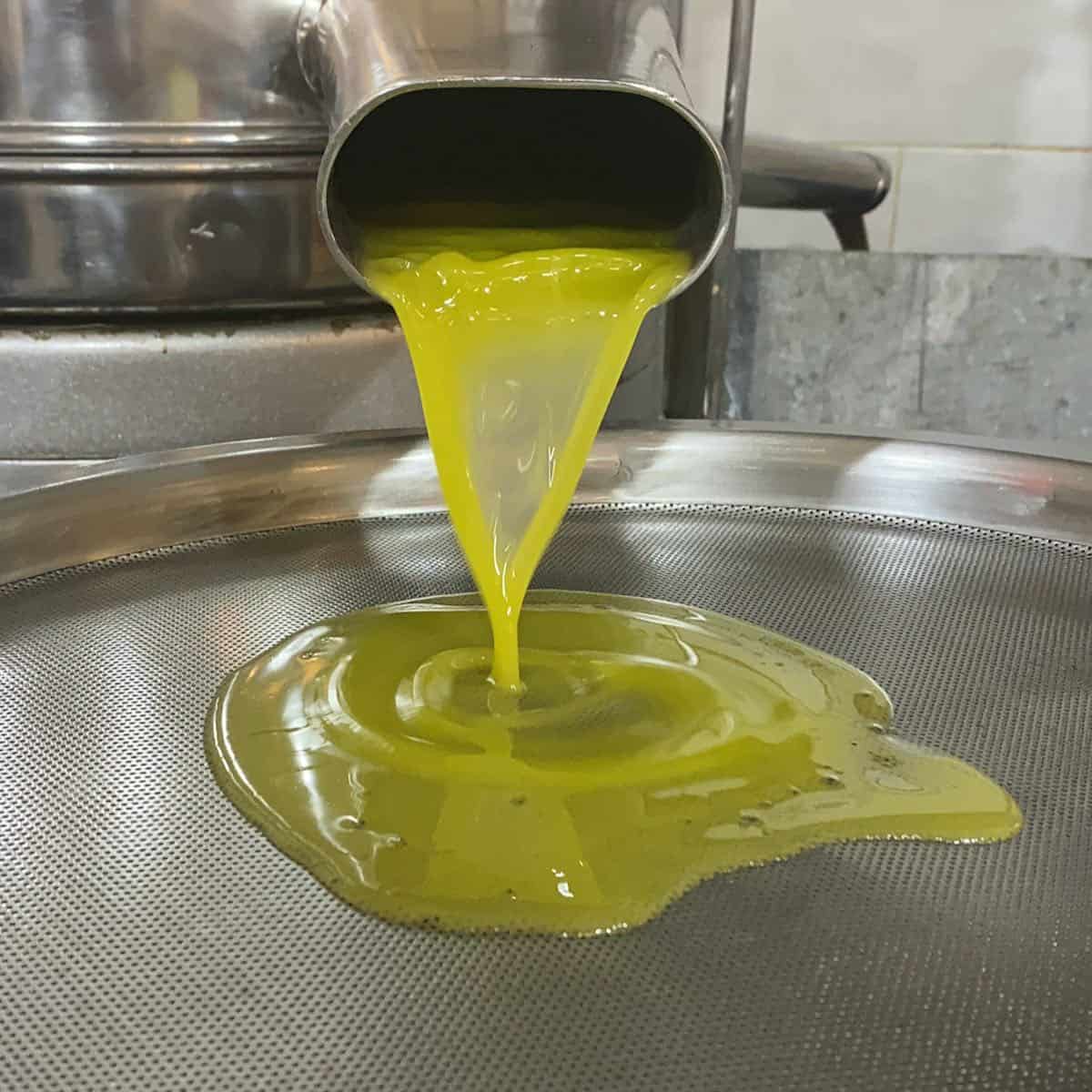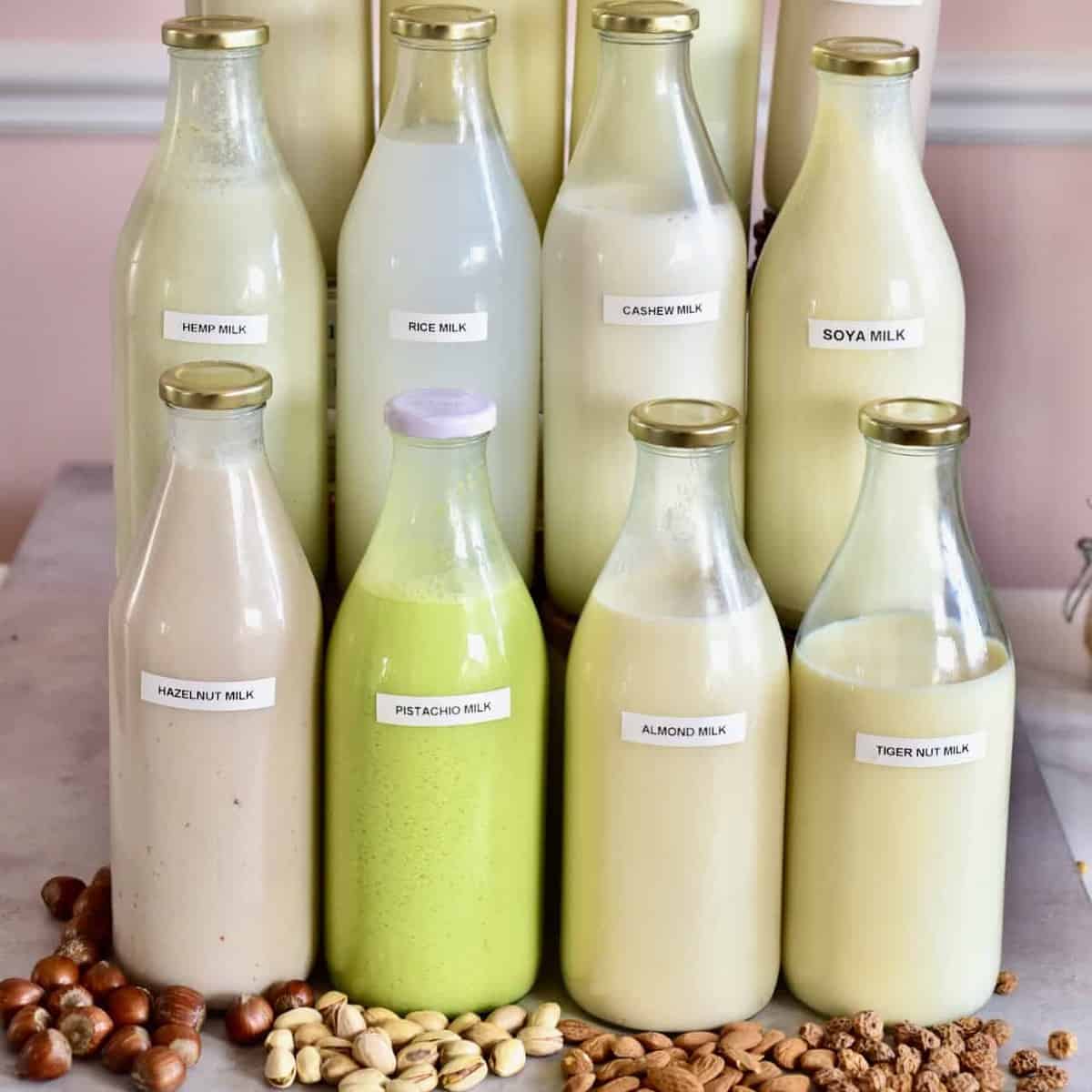Recently, alongside my usual recipe and DIY content, I’ve taken to my Instagram stories to dip my toes into the water of the science and background behind certain ingredients in the kitchen. Some of you may not know this, but I’m a Dr (the Ph.D. kind, not medical) in Engineering Science. I love the science and maths behind food, ingredients, and the way they work – like baking powder and baking soda. But first, both baking powder and baking soda are leavening agents so, let’s jump into that first.
What are leavening agents?
Leavening agents are substances that release some form of gas into your baked goods. In turn, these gases cause the dough/batter to react in several ways, namely causing your recipes to rise. To leaven refers to making the item “light,” i.e., to raise it and give items like cake their light and airy texture. There are four main types of leavening agents: chemical, biological (natural), and vaporous – which includes air and steam.
Leavening agent examples
Vaporous: Air – includes whipping egg whites, creaming butter and sugar, whipping aquafaba, etc. – all these methods introduce air into the batter/dough.Vaporous: Steam – includes pastry that traps in liquids that steam in the oven, such as choux pastry and Yorkshire puddings. Homemade pita also uses steam to create its “pocket” inside.Biological: Yeast used in bread and baking is the most common biological agent. However, kefir and unpasteurized beer are also natural and will produce carbon dioxide in the baked goods.Chemical: Baking powder and baking soda are both examples of chemical leavening agents (as opposed to yeast, for example, which is a natural/biological leavening agent). Most often, chemical leavens are used in recipes to avoid a long biological “fermentation”, so in cakes and cookies rather than in many breads).
Chemical leavens react with other ingredients within the baked goods (i.e., combining an alkali with acid) and/or with heat, to produce carbon dioxide.
What Is Baking Soda?
Baking soda is a single ingredient, sodium bicarbonate (NaHCO3 – also called bicarbonate of soda), and is an alkali white powder, with a pH level of 8-9. Baking soda works by reacting to acidic ingredients to produce CO2 and leaven a dough/batter. Naturally acidic ingredients that react with baking soda include: Honey, lemon juice, buttermilk, yogurt, vinegar, cream of tartar, molasses, coffee, some fruit, natural cocoa powder (not dutch-processed), etc. It’s also important to note that, unlike biological leavening agents, baking soda will react immediately when combined with an acidic ingredient – like when baking soda and vinegar are mixed and fizzes/bubbles. This is why it’s good to get these baked goods in the oven fairly quickly, so you don’t allow the gas to release too much before baking. Note: Baking soda CAN also react without an acid. If it is heated above 175ºF/80ºC, it can also cause a reaction. When combined with an acid, the heat will help cause a secondary reaction. When reacting within a batter, tons of little air bubbles will form and expand; these, in turn, work to turn your cake batter from its gloopy batter into an airy, fluffy cake. Note* Baking soda is around 3-4x stronger than baking powder (which is a combination of ingredients that includes baking soda).
When to use baking soda?
Baking soda can be used to leaven recipes like pancakes, muffins, cakes, and “quick breads.”
Recipes that use baking soda
Light and Fluffy Red Velvet CakeOeey Gooey Vegan Chocolate Chip CookiesFudgy Vegan Gluten-Free Chocolate Cake (uses both soda & powder)Sundried Tomato Savoury Muffins (With Rainbow Hummus Frosting)American Pancake Cake (uses both soda & powder)Classic Carrot Cake with Cream Cheese Frosting (uses both soda & powder)
Alternative recipes
Easy Rainbow Vegan Falafels 5-ways – will also create a fluffy texture.Simple Creamy Hummus – to soften the chickpeas for smooooth hummus. Homemade New York-Style Bagels– can be used in the poaching liquid
What Is Baking Powder?
The difference between baking powder and baking soda is simple. While baking soda is a single ingredient, baking powder in a combination of baking soda (an alkali) and cream of tartar (or another similar acid), which won’t react until a liquid is introduced. There is often also starch added to the mixture (like cornstarch), which extends the shelf life of the product and absorbs excess moisture to keep the two ingredients from reacting to one another. As soon as a liquid is added to the baking powder, it will cause the chemical reaction needed to release the gas and leaven the batter/dough. It will then have a further reaction when heated above 140ºF/60ºC. This prolonged reaction provides even fluffier results (and is also more forgiving if you happen to leave the batter out for a while before baking it or need to chill the batter/dough before baking). There are two types of baking powder. The first – “single-acting baking powder” – reacts when added to a liquid and needs to be baked quickly to avoid losing the gas. The second – “double acting” baking powder or “slow-acting” baking powder – also contains phosphates (usually sodium aluminum sulfate and calcium acid phosphate). This causes both reactions: one with the liquid and one with heat. Top Tip: Several other factors can affect the way baking powder works. For instance, be careful when substituting certain ingredients that have different acid levels. They can upset the balance within the recipe (i.e. using buttermilk in place of normal milk). High altitude baking can also affect the reaction, so you’ll likely need less baking powder. This isn’t something I know enough about, though, to give exact details on reductions.
When to use baking powder?
Baking powder can be used in cakes, quick bread, pancakes, etc. Here are a few recipes to get you started.
Recipes that use baking powder
Blueberry Vegan Mug Cake OR One-Minute Vegan Chocolate Mug CakeRaspberry & Coconut Cake OR Fluffy Coconut Cream CakeFluffy Japanese Style PancakesRainbow Mixed Vegetable Savory CupcakesChristmas Gingerbread Cookies Recipe (+ mini mug topper)Orange Christmas Sugar Cookies; Fawns and SnowflakesThe Perfect Homemade Pancake Mix
It’s important to note that, while both ingredients are used for the same result, they cannot be used interchangeably. Many recipes will include both. This is because the amount of acid you need to react with the amount of alkali needed will change from recipe to recipe. Top Tip: If you’ve run out of baking powder, you can actually make this ingredient at home!
Does baking powder expire? And does baking soda expire?
Yes, if you’ve used baking soda/powder in a recipe and have had no rise, it may be because the product is past its best. To test if it’s still fresh, you can do a quick experiment by combining a little baking soda with some vinegar and watching for the reaction. The same goes for adding some baking powder to a little hot water (1tsp powder to 1/3 cup liquid). If it reacts and fizzes up, then it’s fine; if not, then it’s expired.
How much baking soda to flour?
This can change based on the other ingredients within the recipe (how acidic the ingredients already are, for example). However, as a general rule:
Use 1/4 teaspoon baking soda per 1 cup of flour.
For how much baking powder to flour – check out this post on making homemade baking powder.
Baking Soda Substitutes
You can use potassium bicarbonate as a baking soda substitute 1:1. Other substitutes for baking soda include using whipped egg whites, for the increased leavening ability or club soda. Just be sure to work quick with the soda as the bubbles won’t stay around for long – and the results definitely won’t be as fluffy!
Can I substitute baking soda for baking powder?
You could substitute 1 tsp baking soda for 3-4 tsp baking powder (to have the same amount of baking soda in your batter). The main issue is that the more baking powder you use, the more likely you are to taste it in the mix (it has a very bitter “metallic/soapy” flavor if too much is used). You may also want to decrease the recipe’s acidic ingredients (or swap them for something neutral), as the baking powder has that too. Top tip: if your recipe has salt in it already, then I’d reduce or omit it when using the above method.
Why do some recipes use baking powder and baking soda?
Some recipes call for both baking soda and baking powder because, even though there is C02 released from the acid and baking soda combination, it is not enough to lift/raise that batter; thus, we add baking powder. Similarly, if we add baking powder to a recipe, it could be enough for a reaction. But if there are too many other acidic ingredients (coffee, chocolate, fruit, yogurt, etc.), we need to balance it with an extra “base” (baking soda).
What can I do If I have neither ingredient?
If popping to the shops isn’t possible, you can still experiment with using other leavening methods for your baked goods. For example – if your recipe contains eggs, then you can whip the egg whites until fluffy then fold them into the batter.
Other Useful Guides
If you enjoyed this baking soda vs baking powder, then let me know your thoughts and questions in the comments. I’d also really appreciate a recipe rating and would love to see your recreations – just tag @AlphaFoodie.
